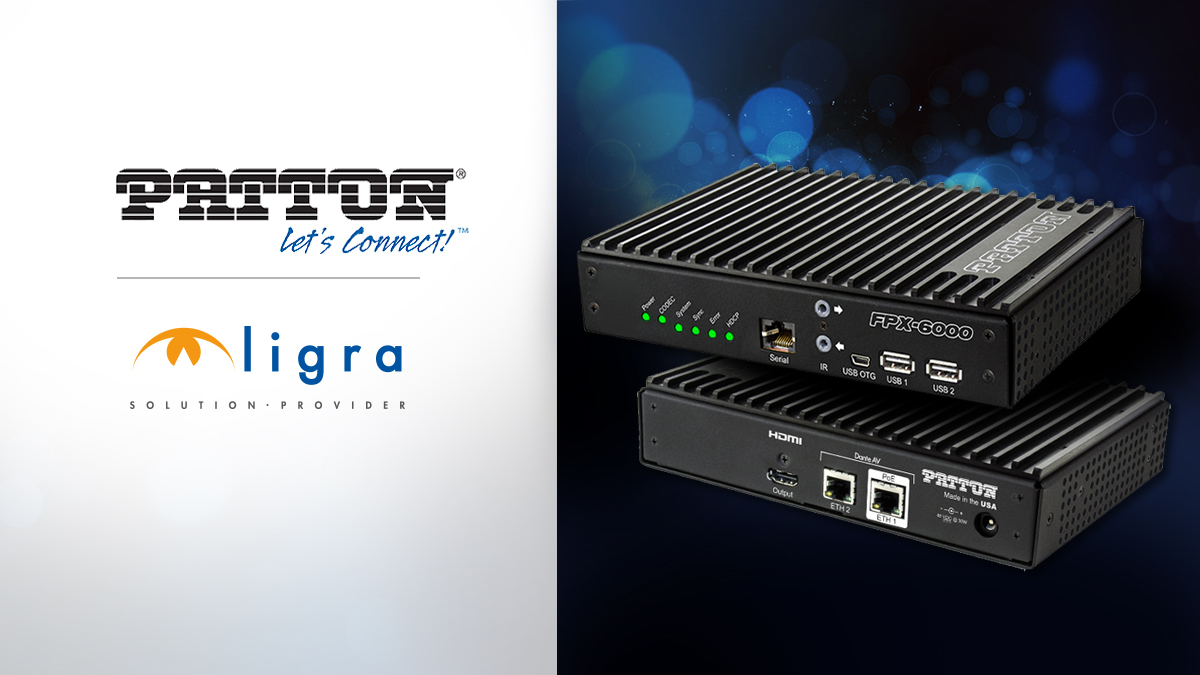
Ligra DS has signed an agreement with the American company Patton for the distribution on the Italian market of its AV-over-IP solutions based on Dante AV. The Dante® network protocol, an acronym for Digital Audio Network Through Ethernet, was developed in 2006 by the Australian company Audinate with the function of distributing an uncompressed multi-channel digital audio signal through a standard Ethernet network between mixers, A/D converters, amplifiers, loudspeakers, etc., avoiding the complexity and limitations of traditional connection solutions. There are currently over 3000 Dante® audio products on the market.
Dante AV, which dates back to 2019, is the natural evolution of Dante® and allows 4K video and audio signals to be transported within the same network using IP packets on Layer 3. Once the routing, i.e. the routing of signals, has been carried out, the adoption of this protocol requires the use of specific devices (e.g. Gateways) to convert and send/receive the signal to the various devices in our AV ecosystem such as monitors, video editing stations, and camcorders that are not yet Dante AV ready. Patton's products do just that and also include high-speed Ethernet extenders, PoE+ Gigabit Ethernet switches, industrial copper/fibre/SFP Ethernet switches and Pro AV extender/converter kits.
Dante AV: the revolutionary new AV solution for standard 1 Gbps networks
Dante AV enables manufacturers to add video content to the Dante® platform. It provides the ease of use, broad interoperability (compatibility between different manufacturers) and integrated control capability that Dante® users already know and expect. AV signals are routed using the familiar Dante Contoller software without the need for matrix switches, directly from a networked workstation.
The Dante AV module provides a maximum of 8 audio channels and 1 video channel for transmission and reception. The I2S interface allows direct connection to a wide variety of ADCs, DACs and DSPs, and the 32-bit video interface supports any video codec with bit rates up to 800 Mbps.
One of the strengths of Dante AV is the synchronisation of video and audio with a latency of less than a microsecond, making time alignment problems a distant memory; a single network clock keeps the entire system synchronised regardless of the number of endpoints.
This new solution simplifies the installation, configuration and use of AV systems, while also reducing costs. It can be used, for example, for live presentations thanks to perfect lip-synchronisation between audio and video, for conference rooms, sports bars, places of worship and in high-end education.
Patton Electronics was the first company to provide appliances audio/video over IP enabled Dante AV.
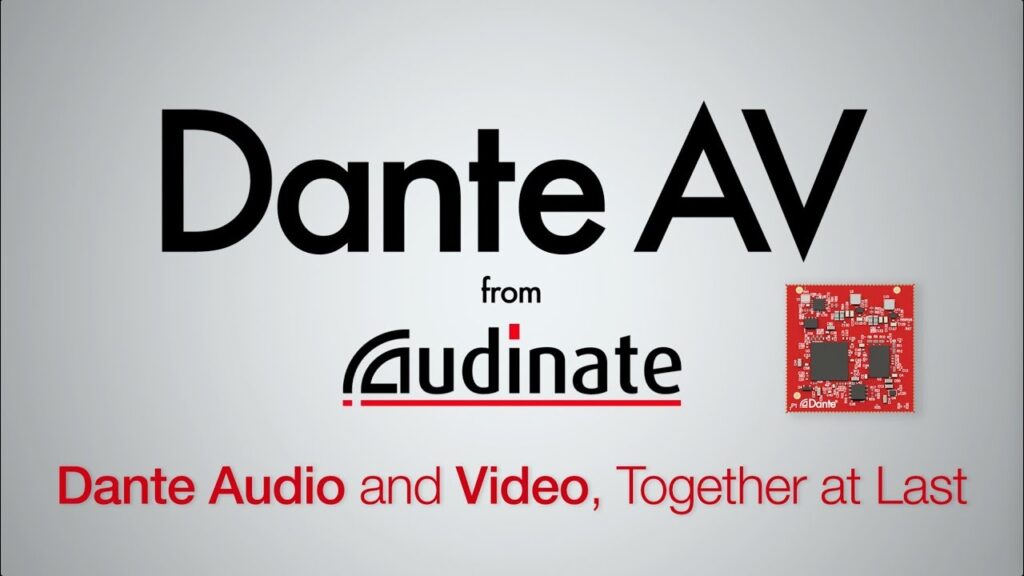
Patton AVoIP FPX6000 gateway
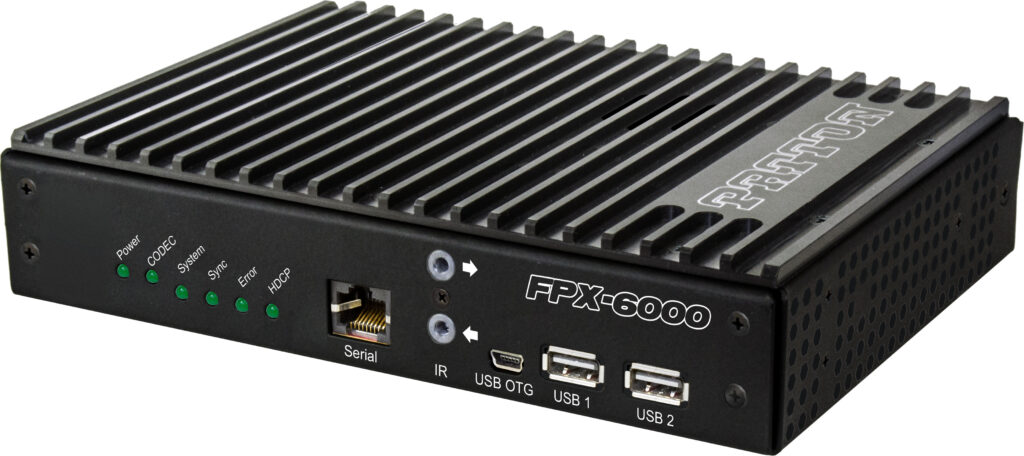
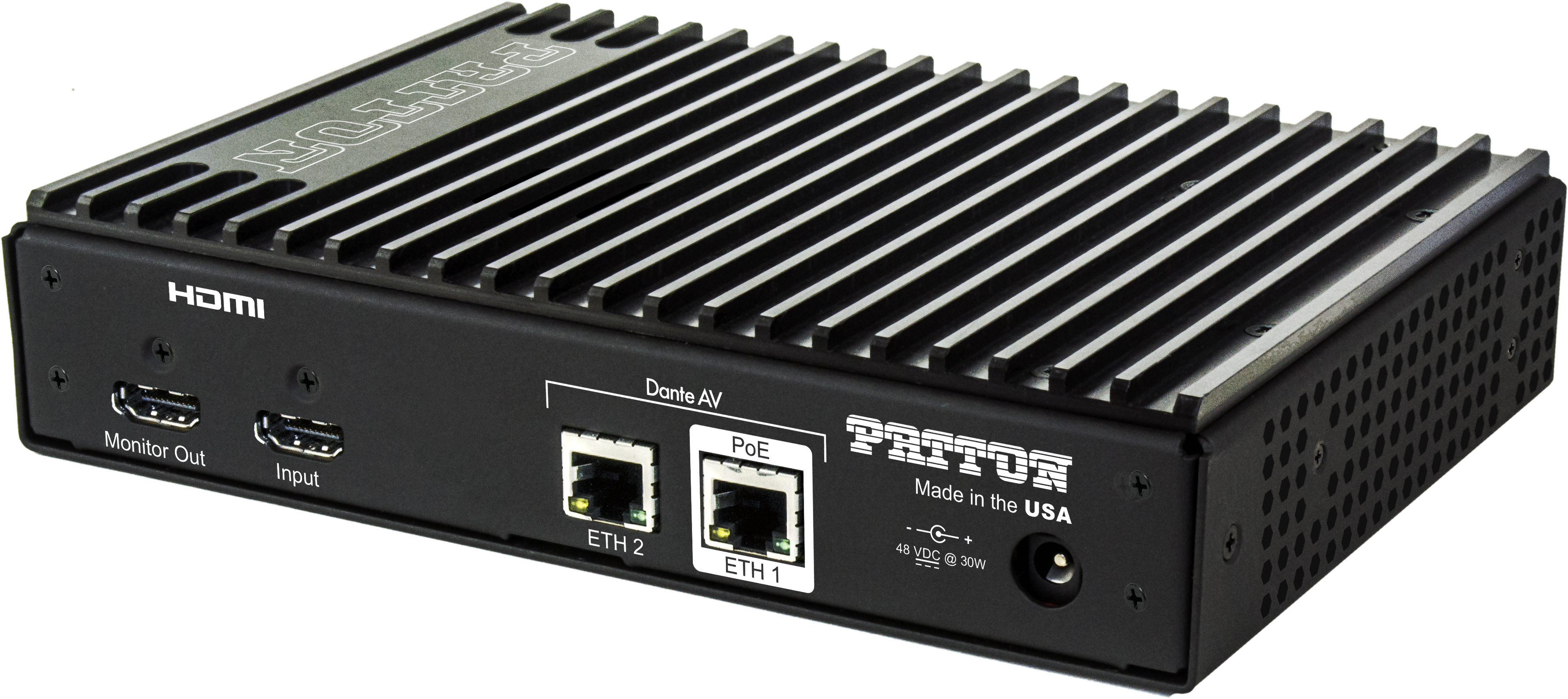
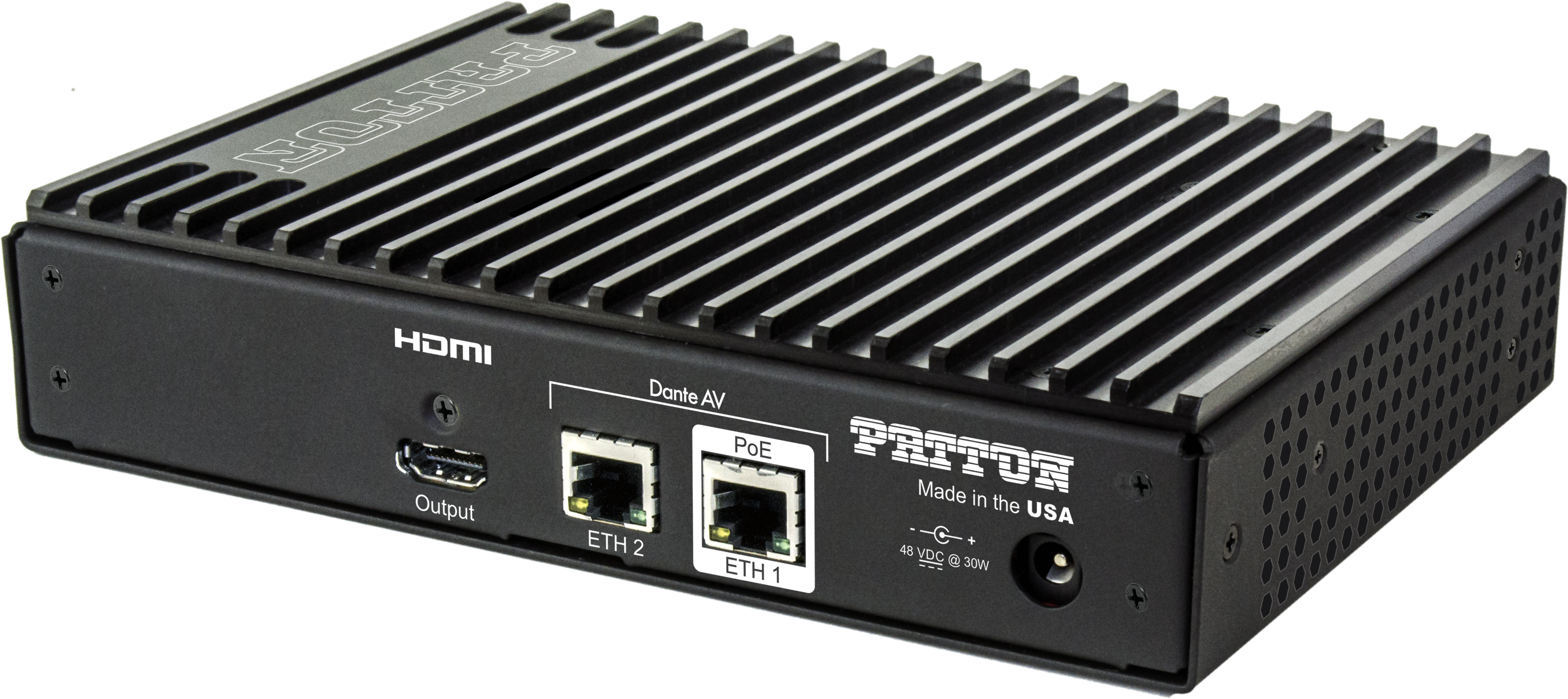
Patton AVoIP FPX6000 in a meeting room
In the diagram below, we can see a typical application example of the FPX6000 in a large meeting room:
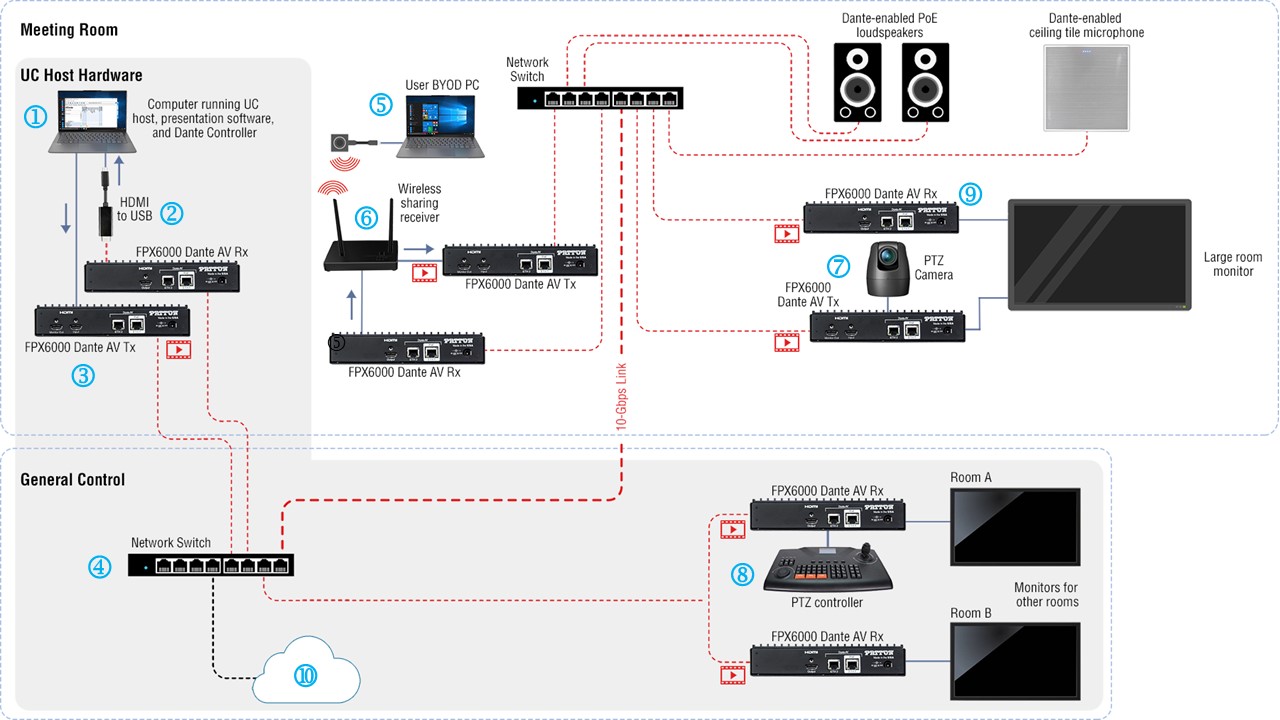
In this application, on the computer running the presentation software (in the image referred to as UC Host Hardware ) (1) Dante Controller software is also installed. This PC receives the AV signal from the FPX6000R on its USB port, after it has been converted from HDMI via a video capture card (2) and this allows any audio and video source on the network (such as a USB video camera and microphone) to be routed to the Host computer. To transmit the video conference from the Host computer, the latter's HDMI output will be sent to an FPX6000T transmitter (3). Both the FPX6000T and FPX6000R seen earlier are connected to the network via a switch (4).
A possible external notebook (5) can connect to the network to send and receive multimedia content via a wireless dongle together with its hub, which acts as a transceiver (6). The latter sends the signal to an FPX6000T and receives it from an FPX6000R to access the Dante AV network.
The PTZ camera (7) of the conference room receives control signals (generated by a PTZ controller (8) from the network and at the same time sends the video to the network via an FPX6000T.
The LFD monitor in the conference room receives video from an FPX6000R (9). The video source will be determined by the routing matrix in the Dante Controller software. This same routing matrix will allow audio inputs and outputs to be routed anywhere independently and in perfect synchrony with the video feed since audio and video share the same network clock.
The entire conference room configuration can then be easily distributed elsewhere on the network, switch to switch, to another destination (M).
